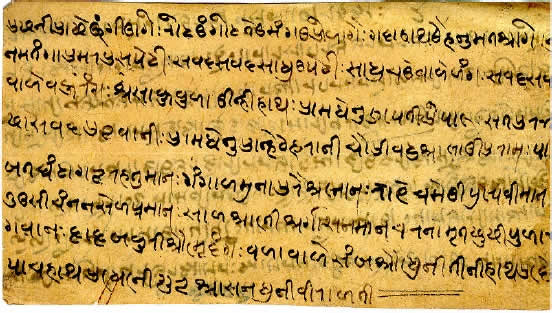During the British colonial period the use of Kaithi was discouraged, except in Bihar, where it was made the official script of government offices and courts. As a result it is also known as the Bihar script. Elsewhere it was used mainly by the Kayastha, a Brahmin caste made up mainly of scribes and clerks, and the name Kaithi is derived from Kayastha, which means 'scribe' in Sanskrit.
Until the early 20th century Kaithi was widely used, but since then it has been largely replaced by Devanagari or other scripts, although it is apparently used to some extent in personal correspondence in rural areas.
Notable Features
- Type of writing system: alphasyllabary / abugida.
- Direction of writing: left to right in horizontal lines.
- Consonant letters carry an inherent vowel which can be altered or muted by means of diacritics or matra.
- Vowels can be written as independent letters, or by using a variety of diacritical marks which are written above, below, before or after the consonant they belong to.
Used to write:
Bhojpuri, Maghadi, Urdu, Awadhi, Maithili and Bengali.Kaithi script
Vowels and vowel diacritics

Other symbols

Consonants

Numerals

Sample text in Kaithi

Source: http://www.scribd.com/doc/52997045/Stotra-in-Kaithi-Script-Rajendra
Links
Information about Kaithihttp://scriptsource.org/cms/scripts/page.php?item_id=script_detail&uid=fhadc85hgh
http://en.wikipedia.org/wiki/Kaithi
http://unicode.org/charts/PDF/U11080.pdf
Kaithi font
http://www.fontineed.com/font/KaithiOTS









.jpg)

.jpg)
.jpg)





0 comments:
Post a Comment
Note: Only a member of this blog may post a comment.